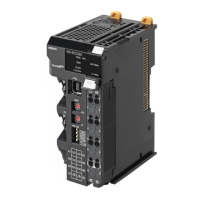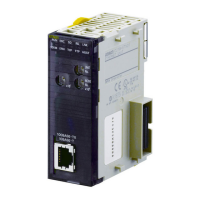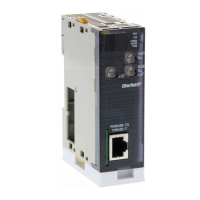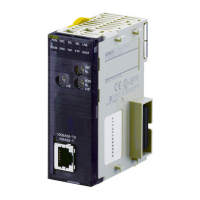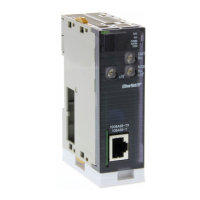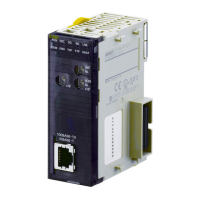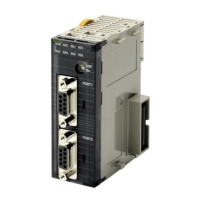245
Advanced Environment-resistive Terminals Section 6-4
6-4 Advanced Environment-resistive Terminals
6-4-1 Node Address, Baud Rate, and Output Hold/Clear Settings
This section describes the Environment-resistive Terminal's node address
setting, baud rate settings, and hold/clear outputs for communications error
setting. These settings are made as follows:
Node address setting: Rotary switches
Baud rate setting: Automatic follow-up
Output hold/clear setting: Software switch
Node Address
Settings
The node address of the Environment-resistive Terminal is set as a decimal,
using the top rotary switch for the ten's digit, and the bottom rotary switch for
the one's digit.
Any node address within the setting range can be used as long as it is not
already set for another node.
Refer to SECTION 5 General-purpose Slaves for details on setting from the
Configurator.
Note 1. Setting the same node address for more than one node will cause a node
address duplication error and communications will not start.
2. Always turn OFF the power (including the communications power supply)
to the Slave before setting.
Baud Rate Setting The baud rate of the whole system is determined by the baud rate set for the
Master Unit. Setting the baud rate for each Unit is not required.
Output Hold/Clear
Setting
Use the Configurator to set the output hold/clear settings. The factory setting
is for outputs to be cleared. Refer to SECTION 5 General-purpose Slaves for
setting details.
6-4-2 Environment-resistive Terminals with 8 Transistor Inputs (IP67):
DRT2-ID08C (NPN) and DRT2-ID08C-1 (PNP)
Input Specifications
Item Description
Content Displays the contents of the communications errors that
occurred.
Network Power Volt-
age
Displays the power supply voltage being supplied when the
error occurred.
Clear Button Clears the error history.
5
4
3
2
1
0
9
8
7
6
5
4
3
2
1
0
9
8
7
6
NOD
ADR
X 10
X 1
Item Specifications
Model DRT2-ID08C DRT2-ID08C-1
Internal I/O common NPN PNP
Input points 8 points (uses one word in the Master)
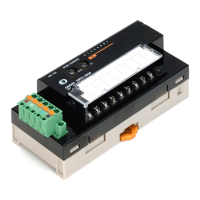
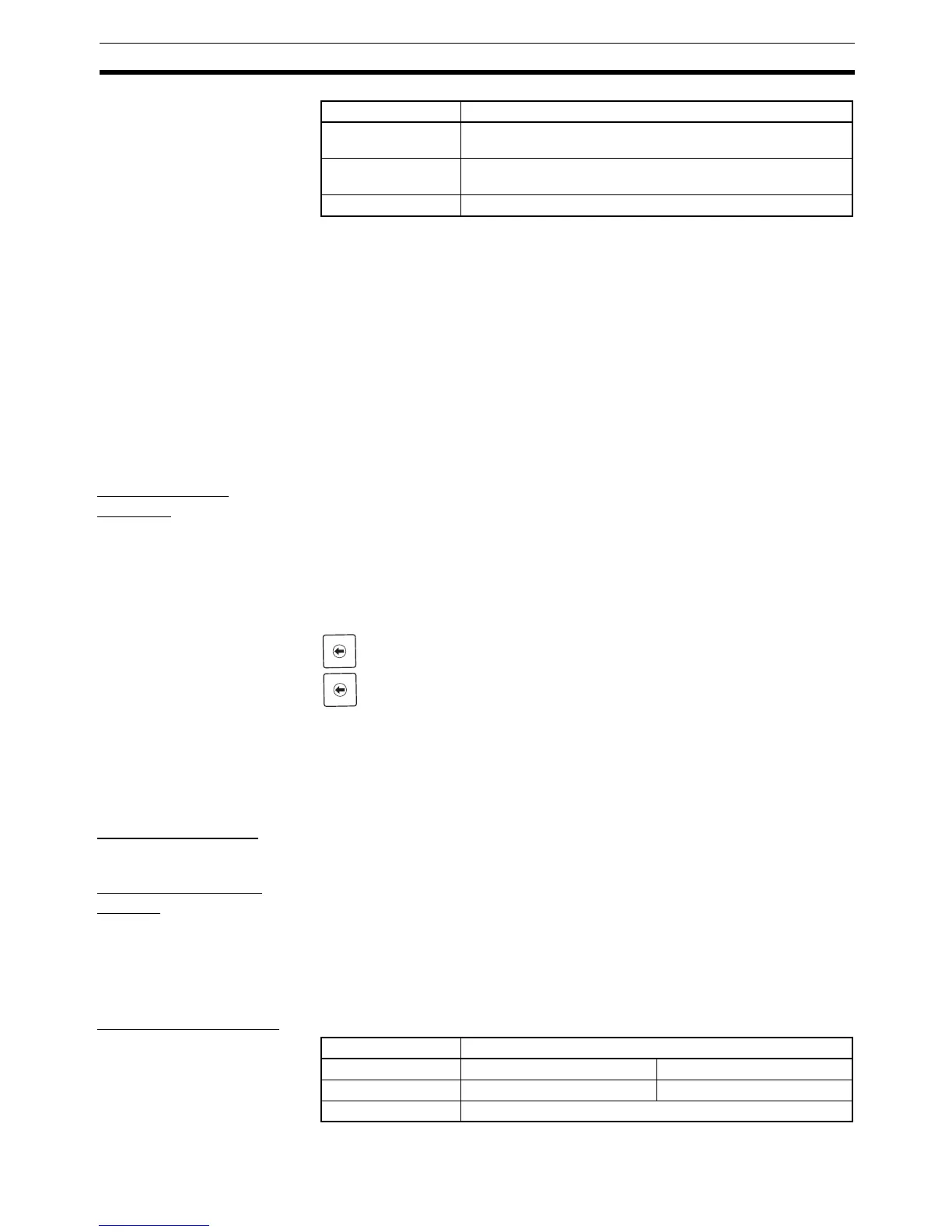